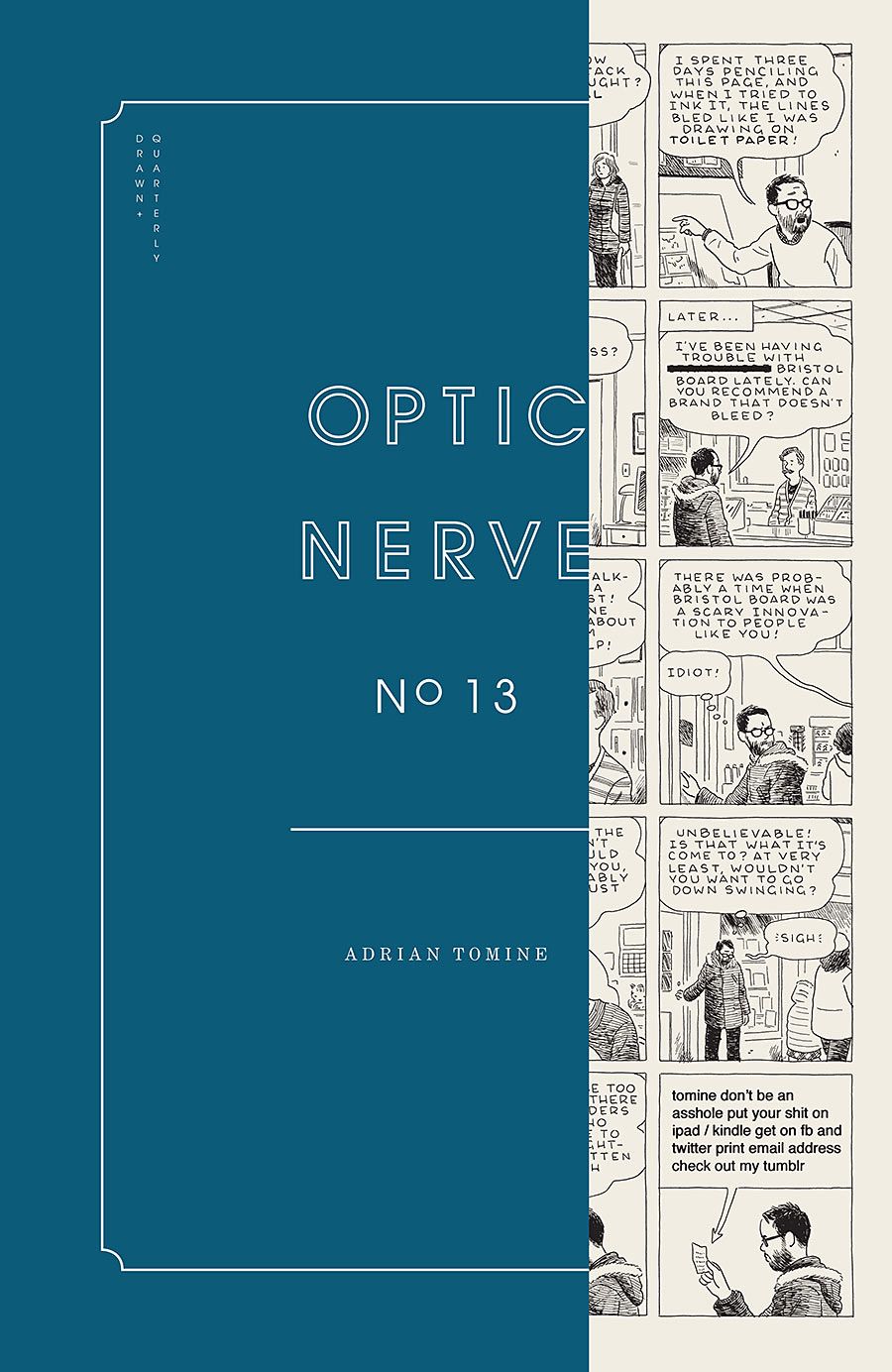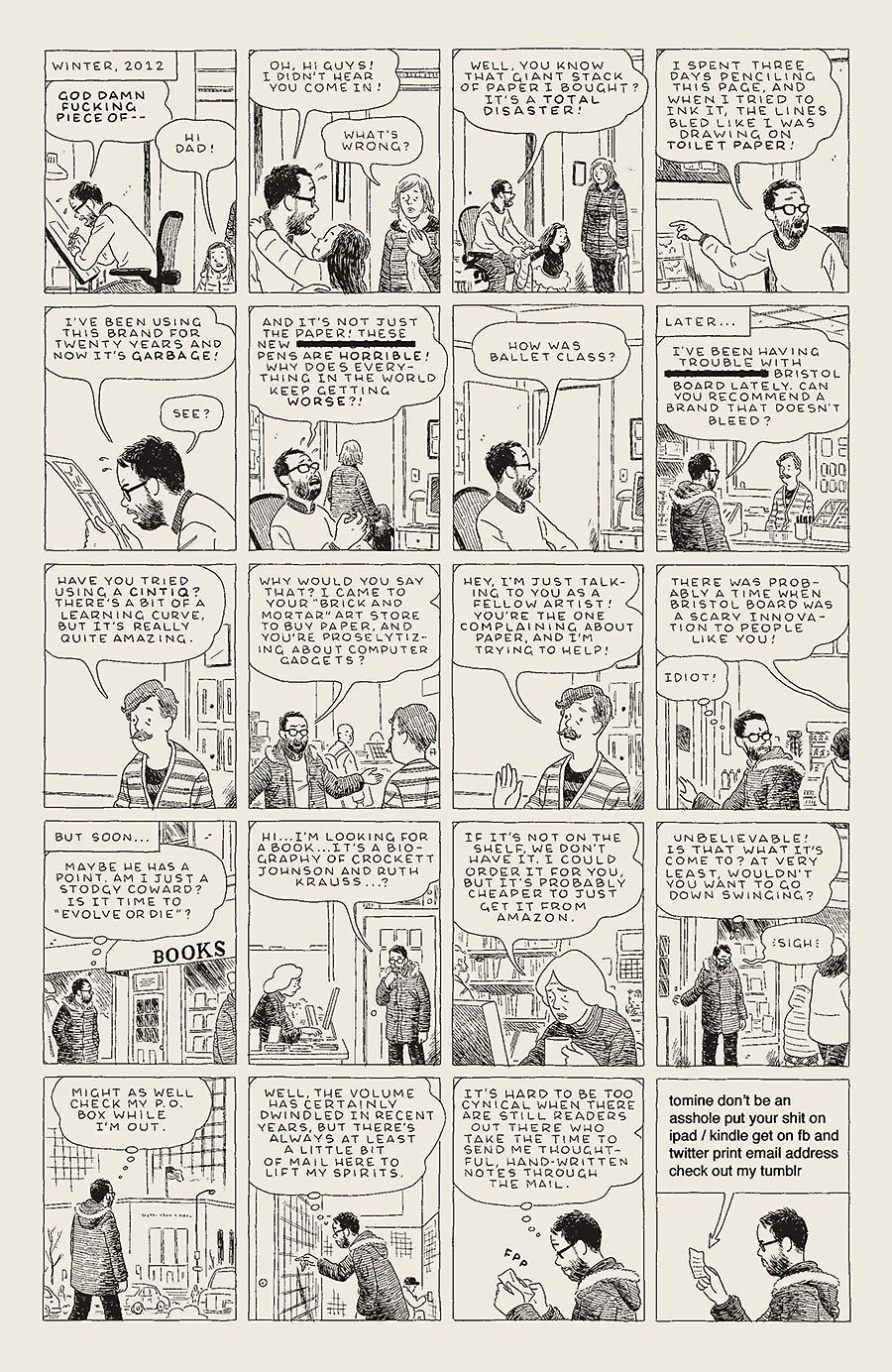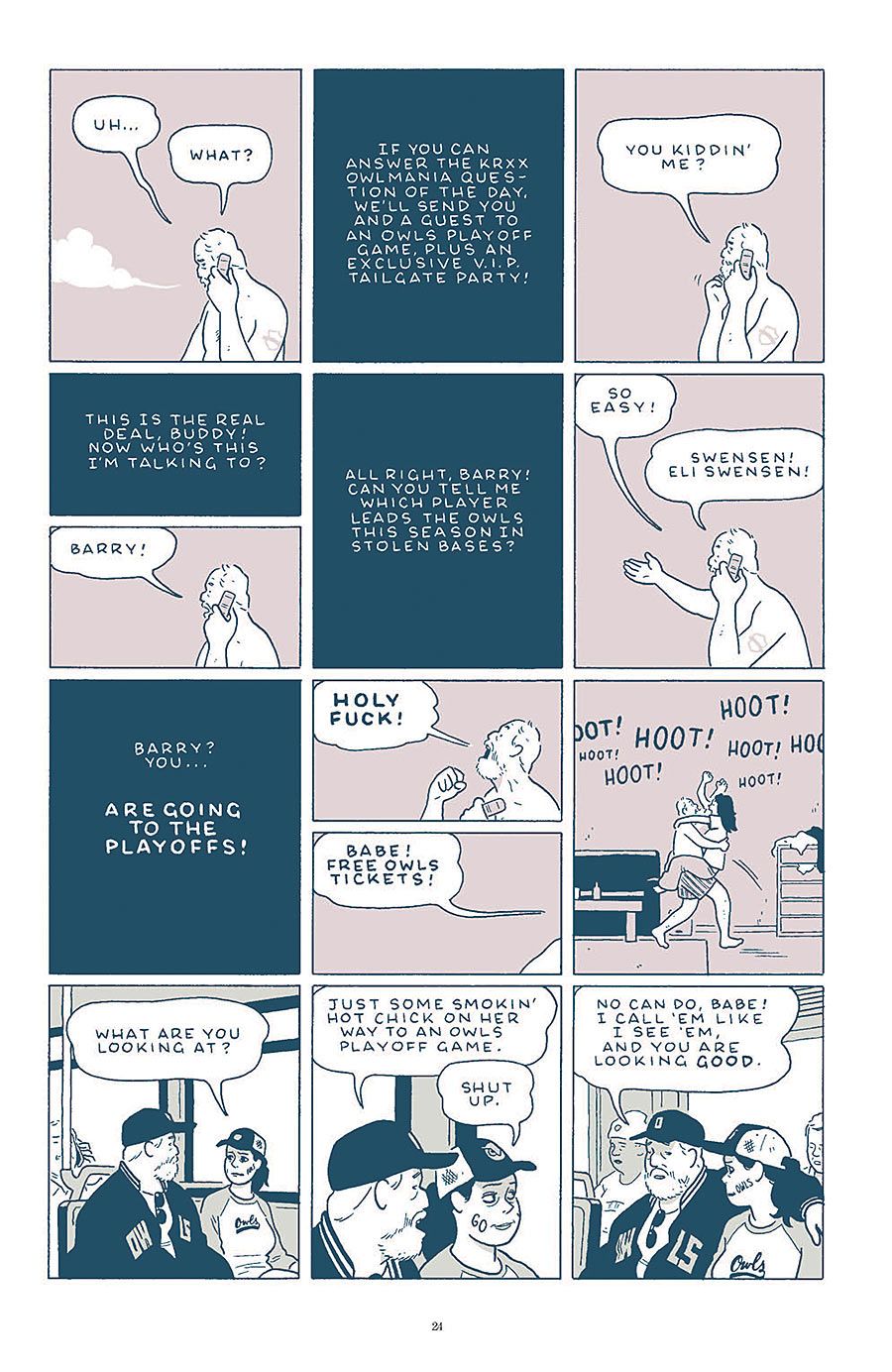Adrian Tomine is one of the most talented and acclaimed cartoonists of his generation. For almost two decades he's been producing the comic "Optic Nerve" for Drawn & Quarterly and crafting a series of thoughtful, funny and dark slices of life that have been collected in books like "32 Stories," "Sleepwalking," "Summer Blonde" and "Shortcomings." Today Tomine is perhaps best know for his illustration work, most prominently in "The New Yorker," much of which was collected in "New York Drawings," which was published last year. He's also been instrumental helping the comics of Yoshihiro Tatsumi get published in North America.
"Optic Nerve" #13 is the odd single issue of an independent comic with three stories. When the comic came out, CBR gave it a rare 5 out of 5 stars and called it "Thoughtful, accomplished and deeply layered. It's as good as a comic gets." The issue makes it clear that while he may not create many comics, Tomine remains a master of the comics form and he was kind enough to talk about the new issue via e-mail with Comic Book Resources.
CBR News: For you, why the interest in telling short stories? What do you enjoy about them?
Adrian Tomine: For some reason, that tends to be the way stories form in my mind most of time. I'm probably revealing some mental deficiency or something by admitting that. Even when I think back on my own experiences, I tend to see things as more episodic than novelistic. When I first started making the "Optic Nerve" mini-comics, I never consciously set out to make "short stories." I just started creating comics and that's what came out. I made a concerted effort to attempt a longer story with "Shortcomings," and as a follow-up to that, I wanted to do something kind of different.
Having said that, it's clear you enjoy playing with form. To what extent is making short stories just the result of you wanting to tell stories in different ways and experiment?
That is something of a guiding principle with regards to this current batch of stories I'm working on; just the idea of telling stories in different ways, using different materials, trying different color systems, etc. But all those things come second to the basic ideas about characters or story. It's more like, I have a story in mind, and then I try to figure out an appropriate or interesting way to tell it. So far I haven't done it the other way around.
Talk a little about "Translated, From the Japanese," which you told in a very interesting manner. What was behind this?
I don't want to sound evasive, but I can't really think of anything I could say in an interview that would make the story more interesting. I've heard some fairly divergent responses to the story, and I don't think it's really my place now to say, "Yeah, you got it right" or "Sorry, you're way off."
Also I did want to add, I loved "Winter 2012" and I'm right there with you.
Thanks. But I'm actually not sure I qualify as a Luddite. I've got all the same modern devices that everyone else has. We're doing this interview over e-mail. I don't want to give the impression that I'm like, writing these words with a feather quill pen and forcing my kid to play with twigs or something.
You've been moving away from the kinds of stories centering more on your people you told earlier in your career. Is that because it's ground you've already covered, because such stories are less interesting because you're older, or what?
I think it was just more a natural evolution, maybe reflecting my own experiences and advancing age. I mean, if I was going to make a calculated decision with marketing and book sales in mind, I probably would've stuck with a cast of young, beautiful people rather than some chubby guy who wants to make plant sculptures!
Do you plan to return to doing something longform like "Shortcomings" again?
Yes to "something longform," but no to "like 'Shortcomings.'"
Are you planning more single issues of "Optic Nerve" in the future?
I'm sure there will be a 14th issue, but beyond that, who knows? A lot of it depends on factors beyond my control.
Do you just come out with them whenever you're finished with an issue? Or did you create five stories and these three are the ones that fit and you felt worked together?
Oh, that would be great if I had a stockpile of completed stories that I was sitting on for two years! No, I'm honestly working right up until the last minute. I was finishing the coloring on "Optic Nerve" #13 while I was on vacation with my family, and then the comic existed three weeks later.
Is the plan to collect the recent issues one of these years?
Yes, issues #12 through #14 will be the basic components of a book at some point, possibly with some additions and subtractions.
You do a fair deal of illustration work. Do you think of yourself as primarily a cartoonist or illustrator? Or do you not think that way?
The ratio of hours I spend on comics work to illustration work is probably like 100 to 1, so at least by that standard, I'm certainly more of a cartoonist. If someone asked me what I do for a living, I'd probably say I draw comics.
When you're working on an illustration, how much are you concerned about storytelling with just a single image?
It depends on the job. I've been in situations where the art direction is so precise and detailed that I just have to basically shut my brain off and give them what they want. On the other hand, something like a "New Yorker" cover is a lot more like cartooning and storytelling, and I'm very much encouraged to communicate something beyond a nice image.
Are there plans for more Tatsumi books coming out from D&Q?
I hope so!
Adrian Tomine's "Optic Nerve" #13 is available now.





